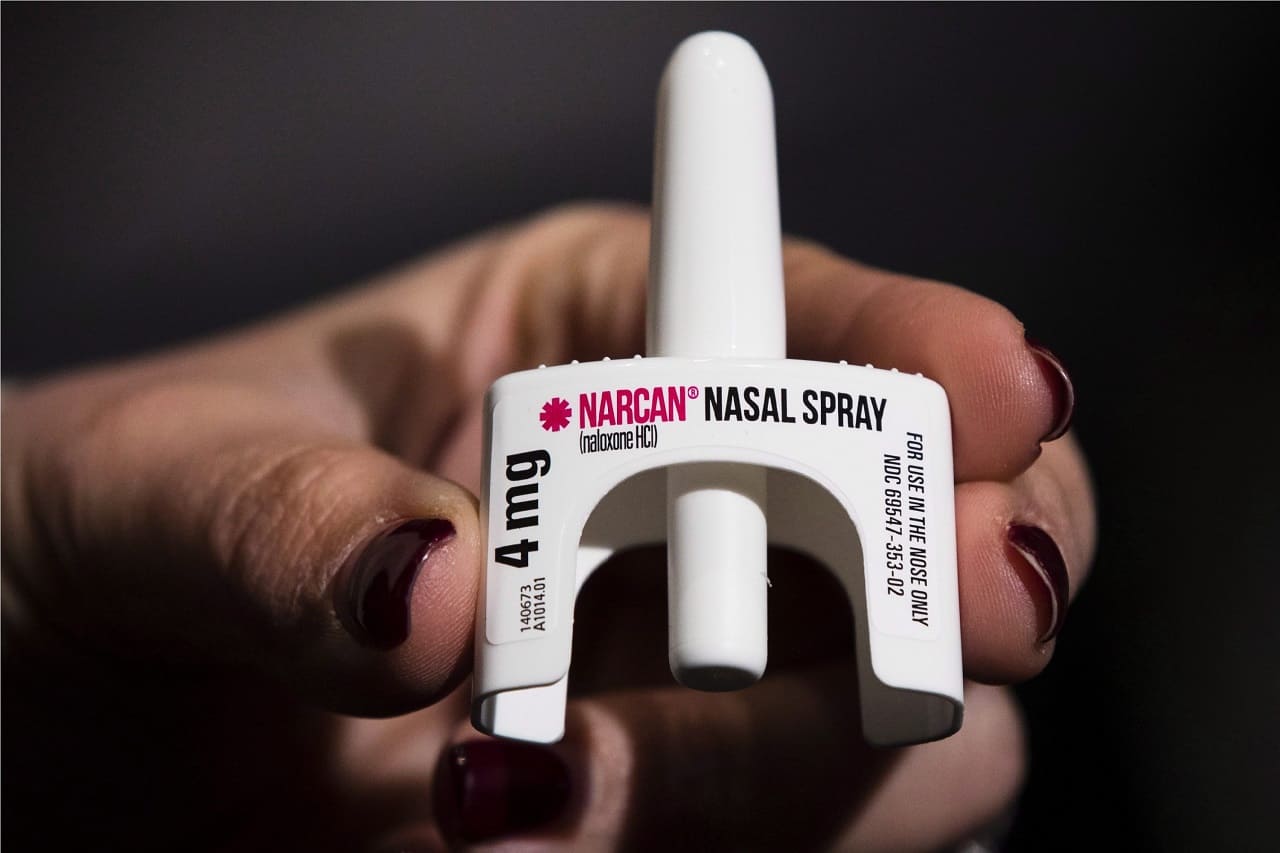Hamilton opioid poisoning trends lead to call for naloxone to be more readily available
Published August 31, 2022 at 5:15 pm

Hamilton has a much more severe opioids poisoning crisis than the entirety of Ontario, with people who are using prescription medications accounting for a larger share of overdoses.
That is why Harsit Patel, a pharmacist at the Hamilton Health Sciences (HHS) hospital network, is renewing a call to have a naloxone kit included whenever someone has a prescription filled for a pain medication. On the occasion of International Overdose Awareness Day, which was marked on Wednesday, Patel is also emphasizing that naxolone kits (often referred to as NARCAN) should be as within reach as a fire extinguisher.
“We have fire extinguishers for just-in-case fires, and we don’t have fires that often,” Patel says “We have epipens for allergies. And looking at how many patients are actually prescribed opioids, it’s quite a bit of a need.
Patel adds that Hamilton Paramedics respond to 50 per cent more overdose calls than they did in 2019, the last year unaffected by the COVID-19 pandemic. But 96% of overdoses are accidental; in one-third of those, prescribed prescription medication is the reason for the overdose.
“It is really disturbing to know that in our community, we have such an issue with the opioid crisis,” he says. “No one is really wanting to have an overdose … The pandemic has made the situation way worse.”
Last year, the city had an overdose death rate 47 per cent above the provincial rate, a jump from 30 per cent higher in 2020. Overdose death rates across the province have increased since 2017.
Hamilton Police also say that they give naloxone once every 2½ days.
Did you know, Hamilton Police administer naloxone every 2.5 days to someone in #HamOnt?
That’s 96 doses so far this year.
Reduce the stigma and #EndOverdose deaths. https://t.co/rFKpd5glpo
— Hamilton Police (@HamiltonPolice) August 31, 2022
In 2020, Patel joined in with several pharmacists who called for naloxone to be included with certain prescribed pain meds. As it stands, he wants people to know NARCAN, the nasal kit, is available in any pharmacy or public health office in Ontario. A person can also ask for it in the name of harm reduction and obtain it without sharing their health card.
The need for more awareness about the need for naloxone is heightened by the realities of an aging population. Patel says he recently had a patient in their 70s whose overdose was caused by dehydration.
“With older adults, if they’re on multiple drugs, not just on one drug, they’re at a heightened risk,” he says. “Recently I had a 72-year-old patient who has been on the same dose of an opioid for several years. But they came in for an overdose that was caused by dehydration.
“They weren’t taking the opioid to get high — they were taking it as usual.”
Naloxone commonly blocks the effects of opioids for 30 to 90 minutes. When someone obtains a kit, a pharmacist or nurse will also go through the signs of overdose — which include difficulty breathing, dizziness and unresponsiveness — and how to give the nasal spray. They can also allay concerns about giving it to a person who may not have had an overdose. (The other way that naloxone is administered is by an injection in the arm or thigh.)
“NARCAN won’t do anything bad to them,” Patel says. “It has benefits, but not a lot of harm.”
Of course, going into a pharmacy to ask for a harm reduction medication can be intimidating. Patel says changing the perception of a link between naxolone and illicit drug use is a two-way street.
“The person on the other side of the counter may have stigmatizing senses,” he says. “They may go ‘why do you need it?’ As a profession, pharmacy has some work to do in destigmatizing and understanding this is not a person using fentanyl on the street. This is a person who is prescribed percocets and they took too much, or their child took it by mistake.”
In his capacity with HHS, Patel says he has given about 150 naloxone kits to fellow employees from various departments. He notes he is seeing people from many walks of life requesting kits so that they might help give aid to help someone avoid the more severe outcomes from opioids.
“Just in the last two days, I had bartender who came into the pharmacy,” Patel says. “She was at the end of her shift and found someone unresponsive on her walk to her car, and she had to run back into the bar where. She wanted to make sure she could save the time it would have taken to go back into the bar, find the kit and come back.
“When someone’s not breathing, those minutes count quite a bit.”
insauga's Editorial Standards and Policies advertising





